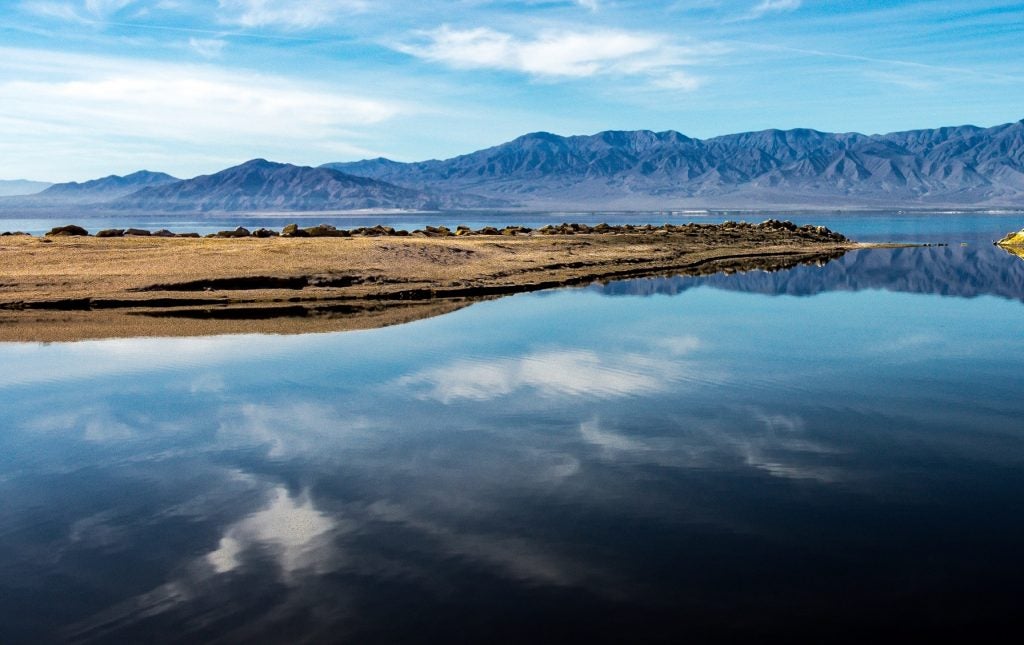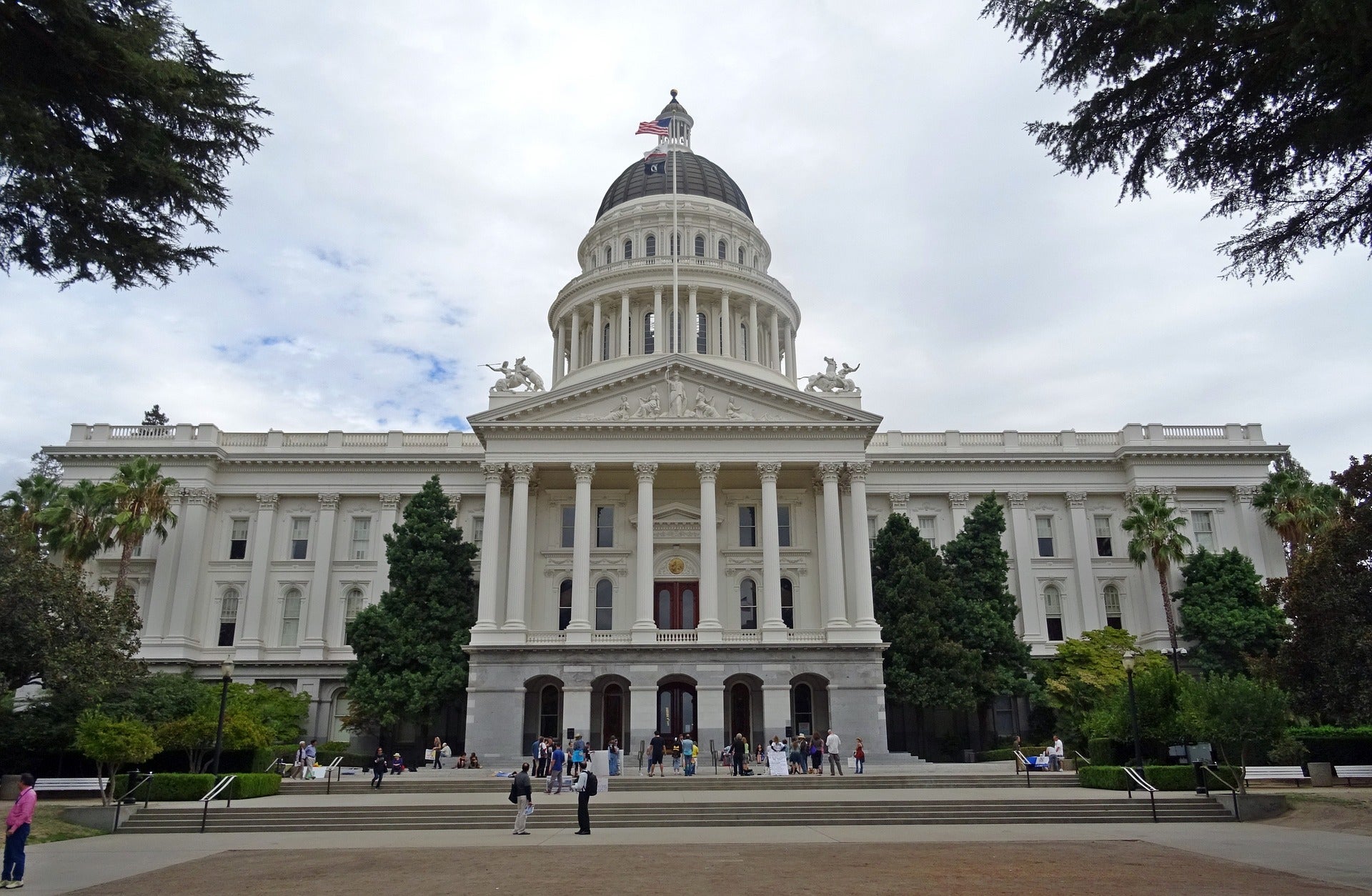State plans to jump-start Salton Sea work, but locals remain frustrated
This post was co-authored by Pablo Garza and Ronna Kelly.
The Salton Sea is California’s largest lake, but it’s hard to grasp its immense size – and beauty – until you see it with you own eyes. Last week, roughly 200 people gathered in this unique area – both residents and leaders from around the Salton Sea and from outside the region – for the Salton Sea Summit, a conference that explored the many challenges and solutions facing the Salton Sea region.
The summit was important because, as California Secretary for Natural Resources Wade Crowfoot noted during his keynote on the first day, the Salton Sea has “major problems.”
Chief among these: The Salton Sea is receding.
The shrinking of the Salton Sea is a longer-term trend that was exacerbated by the largest rural-urban water transfer in the U.S., finalized in 2003. Under the transfer, the Imperial Irrigation District agreed to send up to 300,000 acre-feet of Colorado River water per year to Los Angeles and San Diego. Since 2003, the Sea has receded more rapidly, exposing some 40 acres of new shoreline and toxic dust. This dust, in turn, is contributing to already poor air quality and high rates of respiratory illnesses in the region.
As part of the transfer agreement, the state committed to thousands of acres of dust suppression and habitat restoration projects, and state lawmakers and voters have approved $365 million in funding for such projects. But action has long been stalled, and local residents and leaders are fed up.
This frustration was evident at the summit and reached a boiling point on Tuesday when the Imperial County Board of Supervisors voted unanimously to declare a local emergency for air pollution at the Salton Sea. The vote came just days after state leaders stressed efforts to jump-start long-delayed projects at the summit.

From popular destination to ecological tragedy
It is easy to understand why residents are frustrated and want to see more action to restore and protect this sometimes otherworldly place. As Crowfoot noted, the Salton Sea is like putting Lake Tahoe in the desert with dramatic mountains as the backdrop.
The Sea is also a critical stopping point along the Pacific Flyway for nearly 400 bird species. And, not that long ago, it was a popular recreation spot for residents and tourists alike.
More recently the Sea has made news headlines for massive bird die-offs as it shrinks and salinity increases.
The state needs to step up quickly to make up for lost time. The Newsom administration has gotten off to a good start, but much more is required. Still, there are some signs of hope.
Will promises finally be fulfilled?
Crowfoot noted that he has visited the Salton Sea “four or five times” since becoming secretary in January. “Our focus now is not making more promises but getting projects done on the ground,” he said. “I’m really optimistic.”
He highlighted the upcoming milestones:
- By year-end, ground will be breaking on a 200-acre dust suppression pilot project that Crowfoot said would “catalyze treating many more acres for dust suppression.” (The state’s 10-year plan calls for 15,000 acres of dust suppression projects completed by 2028.)
- By year-end, a community meeting will be held for input on the 9,000 acres of dust suppression projects.
- By early 2020, permits will be acquired for the 9,000 acres of dust suppression projects.
- By summer 2020, ground will be broken on a nearly 3,800-acre, design-build habitat restoration project.
The upcoming community meeting is a positive development and signal the state is responding to criticism that it has inadequately engaged and informed residents about Salton Sea plans. The state will also create a new Salton Sea website and email newsletter to update residents. Is state action at the Salton Sea finally on the horizon? Share on X
However, these efforts may not be enough, as other engagement challenges remain for communicating with residents around the Sea, including disadvantaged communities.
During a community engagement forum at the summit, panelists noted that many residents don’t have Internet access or computers, or know how to use a computer. “The digital divide is very real,” said Karen Borja, a former community organizer and now director of community affairs at Planned Parenthood in Riverside County. “That website will not be accessible to everyone.”
The Newsom administration would be wise to follow advice offered at the summit. Panelists suggested hiring a community organizer, holding meetings after 5 p.m. in Spanish and English, and providing child care and food.
Significant challenges remain for the Salton Sea region, but the Newsom administration appears to be listening and acting. Hopefully, by the next Salton Sea Summit, stakeholders and panelists will be discussing their successes and offering lessons learned.
Read or download “Salton Sea Vision 2025,” a vision for the Salton Sea created by EDF and partners Alianza, Audubon California, KDI, Pacific Institute and the Sierra Club.












One Comment
SALTON SEA SOLUTIONS!
The “illegal immigrating” New River, whose putrid green water runs like a primordial stew from Mexico’s sprawling city of Mexicali through California’s Imperial Valley into the Salton Sea Cesspool…Start with leveraging Mexico with a tariff for all imports into the USA from products Manufactured in Mexico, to pay for a water treatment plant at the Imperial county Calexico dump area at the New River…
PHASE I -USE That $200 million that the Feds are giving the IID, that could start the water treatment plant at that South border where the New River “immigrates illegally” piped underground into the USA from Mexico!
Phase II – Build another water treatment plant at the North end of the Alamo River before it goes into the sea to filter all farm run off and recycle any nitrogen at that point, using “zeolite” from a mine near Blythe, CA to use in settling ponds to trap nitrates before entering the sea. The nitrate full zeolite could be reused in ground reclamation projects to enrich soils.
Make the State responsible to ask for Federal assistance.
But will those monies just pay for more studies and bigger government? Entrenched Bureaucracy!
Form a local disbursement escrow account to manage and hold accountable the budget for construction and annual maintenance.
Win! Win! for Imperial County, Riverside County and its Citizens, the State of California and the Salton Sea…
Make the Salton Sea a National park to involve Feds?